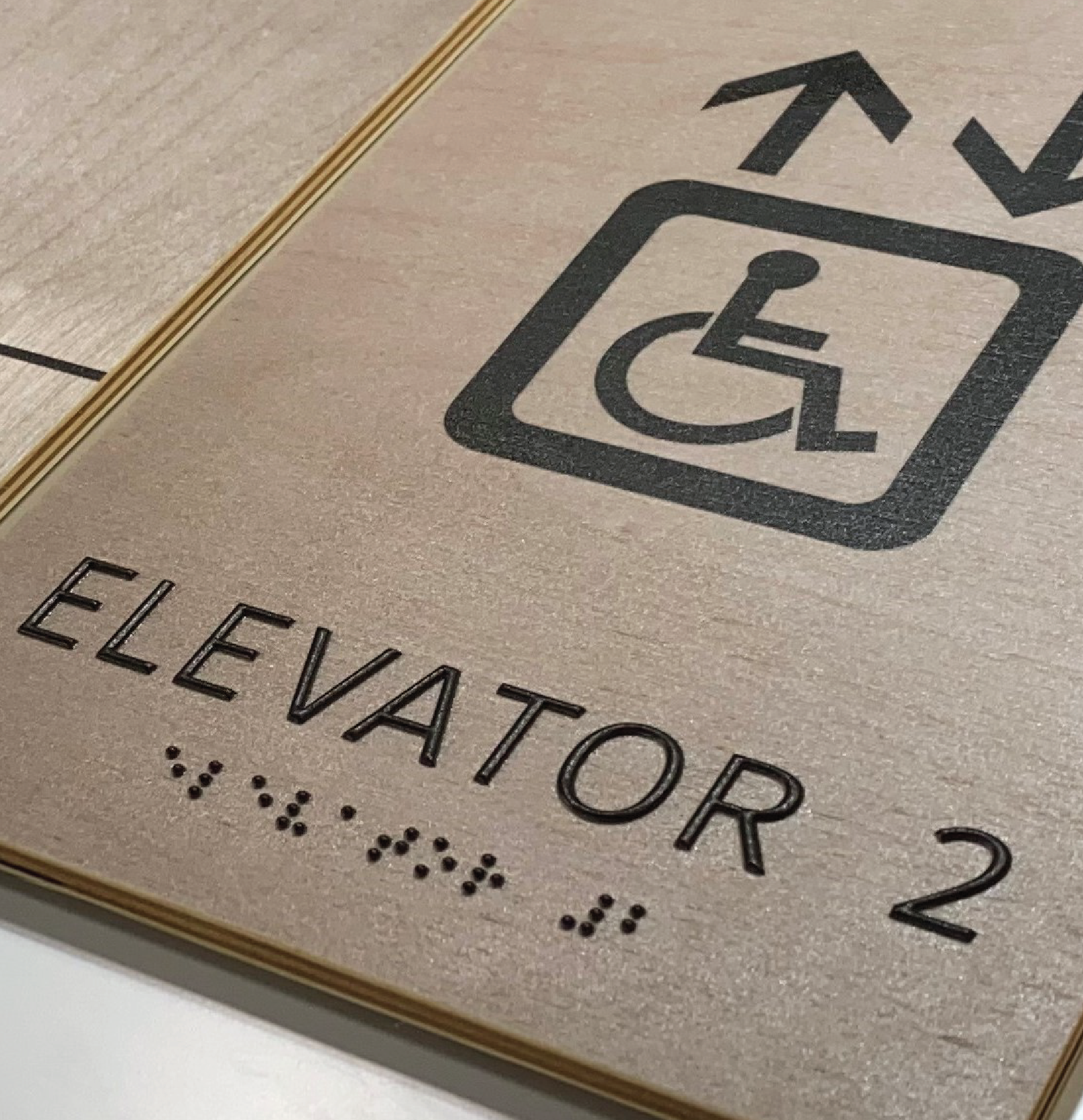Just How ADA Signs Enhance Availability for Everyone
Just How ADA Signs Enhance Availability for Everyone
Blog Article
ADA Signage: Making Sure Accessibility and Conformity in Public Spaces
ADA signs plays an essential function in ensuring availability and conformity within public rooms, dramatically adding to a comprehensive setting for people with handicaps. As we explore the subtleties of ADA signs, from responsive attributes to make intricacies, it's crucial to consider how these elements coalesce to copyright the rights of all users.
Importance of ADA Signs
In modern-day culture, the value of ADA signs prolongs beyond simple compliance with legal requireds to personify a dedication to inclusivity and availability for all individuals. These indications are important in creating settings where people with handicaps can browse public areas with the same convenience and freedom as those without specials needs. By supplying clear and standardized details, ADA signage ensures that every person can access centers, services, and details without barriers.
The significance of ADA signs lies in its ability to boost the high quality of life for people with handicaps by advertising equal accessibility. It removes the barriers that might otherwise impede their ability to take part totally in neighborhood life. Additionally, these signs serve as noticeable signs of a company's commitment to variety and equal rights, mirroring wider social worths that champion the rights and self-respect of all individuals.
In addition, ADA signage plays a crucial duty in public security. By leading people to departures, bathrooms, and other necessary centers, it ensures that all individuals, no matter physical capacity, can evacuate securely during emergencies. In recap, ADA signs is not simply a governing demand but an effective tool for promoting a fair and inclusive culture.
Secret Components of Compliance

Placement is essential; signs should be set up in places that are reachable and quickly noticeable. Normally, signage ought to be installed between 48 and 60 inches from the ground to guarantee access for both standing and mobility device customers. Tactile components, such as Braille, are essential for individuals with visual impairments, providing crucial information in a non-visual style.
High-contrast shades between the message and background are essential to improve readability for individuals with low vision. The ADA mandates particular comparison ratios to ensure clarity. Furthermore, personality dimension is an essential factor to consider, with minimal elevation needs dictated by the checking out range to make sure readability from different angles.
Style Considerations for Availability
Creating accessible signs calls for a careful strategy to ensure it fulfills the demands of all users, specifically those with impairments. This includes thinking about various layout elements that enhance readability and use. Trick variables consist of the selection of typeface, color contrast, and responsive functions. Typefaces must be sans-serif, with straightforward and clear letterforms, to assist in easy analysis. The size of the message is equally crucial, with ADA guidelines recommending a minimum elevation based upon watching distance to make certain readability.
Contrasting shades in between text and history are vital for presence, specifically for individuals with aesthetic disabilities. In addition, responsive components, such as Braille and elevated characters, are vital for people who are blind or have low vision.
Additionally, the positioning of signage plays a considerable role in accessibility. Indicators ought to be installed in areas that are unblocked and conveniently obtainable. Making certain that signs is placed at suitable elevations and angles makes it possible for all users, consisting of those making use of wheelchairs, to communicate with them properly.
Usual Mistakes to Prevent

An additional widespread mistake is the incorrect positioning of signage. ADA guidelines specify specific height and location needs to make sure that indicators are easily noticeable and obtainable by all individuals, consisting of those making use of mobility devices. Overlooking these guidelines not just hampers ease of access yet also takes the chance of non-compliance with legal standards.
In addition, not enough contrast between text and background is a frequent oversight. Appropriate contrast is necessary for readability, especially for individuals with reduced vision. Designers in some cases choose colors that are aesthetically enticing but do not have the needed contrast, rendering the text challenging to determine.
Last but not least, some developers stop working to integrate responsive components, such as Braille, which are important for people who are blind. Omitting these functions not only results in non-compliance with ADA guidelines but also restricts accessibility for a sector of the population that counts on tactile information.
Future Trends in Signs
Advancements in technology and increasing awareness of inclusivity are forming the future patterns in signs style. As culture ends up being a lot more mindful of varied demands, the assimilation of smart modern technologies right into signs is gaining grip. Digital signs, for circumstances, is evolving to include real-time updates and interactive features, which can be important in giving vibrant details in public rooms. These signs usually include touch displays or gesture-based controls, allowing customers to browse content tailored to their particular needs.
Another arising pattern is the application of augmented truth (AR) to enhance individual experience. AR-enabled signage can overlay electronic info onto the physical atmosphere, supplying aesthetically damaged people with auditory or haptic feedback. ADA Signs. This technology not only improves availability but additionally produces an engaging experience for all users
Sustainability is additionally a significant aspect influencing signs patterns. Green products and energy-efficient illumination services are being prioritized to align with worldwide ecological objectives. Innovations in materials science are leading to the advancement Your Domain Name of more weather-resistant recommended you read and durable signs.
Final Thought
ADA signage plays an essential role in guaranteeing access and conformity within public areas by incorporating responsive elements, high-contrast shades, and calculated placement. The adherence to ADA standards not just assists in safe navigating for people with impairments but additionally represents an organization's dedication to variety and inclusivity. By preventing common errors and welcoming future patterns, public rooms can remain to progress these values, making sure that the civil liberties and self-respect of all people are valued and maintained.
ADA signage plays an indispensable function in assuring accessibility and compliance within public spaces, considerably contributing to an inclusive atmosphere for individuals with disabilities. As we discover the subtleties of ADA signs, from responsive attributes to make complexities, it's important to consider how these elements integrate to maintain the legal rights of all customers.In modern society, the relevance of ADA signage extends past plain conformity with lawful requireds to personify a web link commitment to inclusivity and access for all people. By supplying clear and standardized info, ADA signs makes sure that everyone can access centers, solutions, and details without obstacles.
ADA signage plays an essential duty in assuring access and compliance within public areas by incorporating tactile components, high-contrast shades, and calculated placement. (ADA Signs)
Report this page